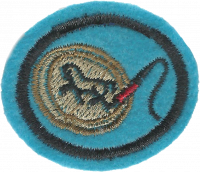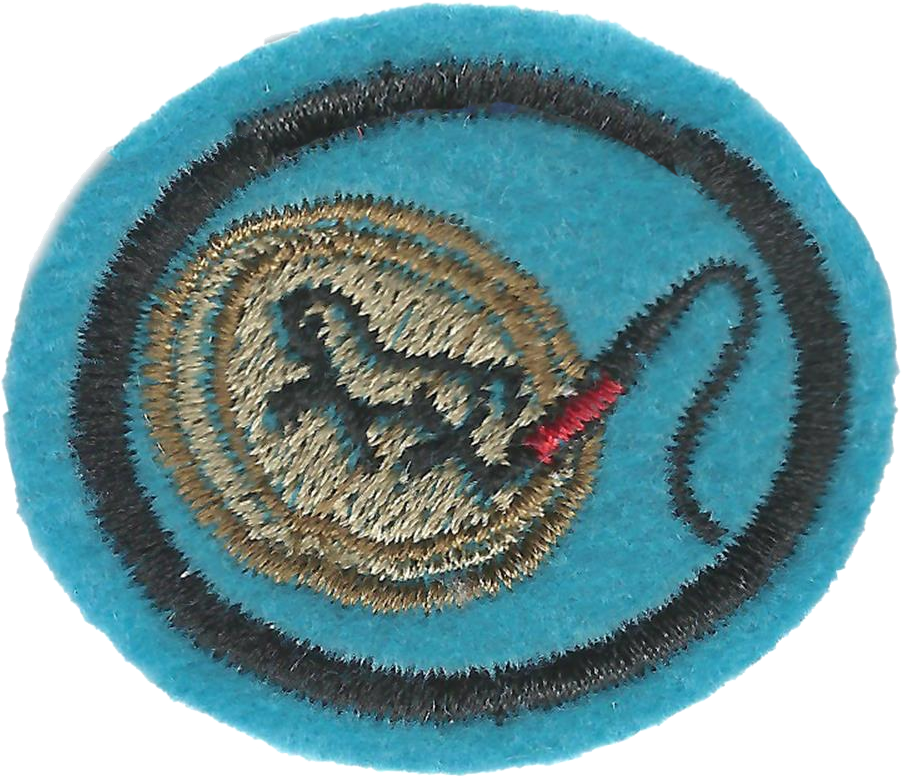Difference between revisions of "AY Honors/Pyrography/Requirements"
From Pathfinder Wiki
< AY Honors | PyrographyAY Honors/Pyrography/Requirements
Jomegat bot (talk | contribs) m (Add RequirementsHeader) |
m (- Category of Honor Requirements) |
||
| (9 intermediate revisions by 2 users not shown) | |||
| Line 1: | Line 1: | ||
| − | : | + | {{HonorSubpage}} |
| + | |||
| + | <section begin=Body /> | ||
| + | |||
| + | <b>1. <section begin=req1 /><noinclude><translate><!--T:1--> | ||
| + | </noinclude>Define pyrography. What is the origin of this millenial art? | ||
| + | <noinclude></translate></noinclude><section end=req1 /></b> | ||
| + | |||
| + | <b>2. <section begin=req2 /><noinclude><translate><!--T:2--> | ||
| + | </noinclude>What tools are necessary for pyrography? | ||
| + | <noinclude></translate></noinclude><section end=req2 /></b> | ||
| + | |||
| + | <b>3. <section begin=req3 /><noinclude><translate><!--T:3--> | ||
| + | </noinclude>Describe, step by step, the proper procedure for works of pyrography. | ||
| + | <noinclude></translate></noinclude><section end=req3 /></b> | ||
| + | |||
| + | <b>4. <section begin=req4 /><noinclude><translate><!--T:4--> | ||
| + | </noinclude>Name two materials that can be used for pyrography. | ||
| + | <noinclude></translate></noinclude><section end=req4 /></b> | ||
| + | |||
| + | <b>5. <section begin=req5 /><noinclude><translate><!--T:5--> | ||
| + | </noinclude>Explain how temperature can influence the speed of pyrography work. | ||
| + | <noinclude></translate></noinclude><section end=req5 /></b> | ||
| + | |||
| + | <b>6. <section begin=req6 /><noinclude><translate><!--T:6--> | ||
| + | </noinclude>What care and precautions should be taken when working with pyrography? | ||
| + | <noinclude></translate></noinclude><section end=req6 /></b> | ||
| + | |||
| + | <section begin=challenge /> | ||
| + | <b>7. <section begin=req7 /><noinclude><translate><!--T:7--> | ||
| + | </noinclude>Draw a picture for each of the following areas, in any material of your choice: | ||
| + | <noinclude></translate></noinclude><section end=req7 /></b> | ||
| + | |||
| + | :<b>a. <section begin=req7a /><noinclude><translate><!--T:8--> | ||
| + | </noinclude>Animal | ||
| + | <noinclude></translate></noinclude><section end=req7a /></b> | ||
| + | |||
| + | :<b>b. <section begin=req7b /><noinclude><translate><!--T:9--> | ||
| + | </noinclude>Flower | ||
| + | <noinclude></translate></noinclude><section end=req7b /></b> | ||
| + | |||
| + | :<b>c. <section begin=req7c /><noinclude><translate><!--T:10--> | ||
| + | </noinclude>Landscape | ||
| + | <noinclude></translate></noinclude><section end=req7c /></b> | ||
| + | <section end=challenge /> | ||
| + | <section end=Body /> | ||
Latest revision as of 21:19, 21 July 2022
1. Define pyrography. What is the origin of this millenial art?
2. What tools are necessary for pyrography?
3. Describe, step by step, the proper procedure for works of pyrography.
4. Name two materials that can be used for pyrography.
5. Explain how temperature can influence the speed of pyrography work.
6. What care and precautions should be taken when working with pyrography?
7. Draw a picture for each of the following areas, in any material of your choice:
- a. Animal
- b. Flower
- c. Landscape



